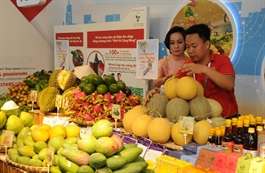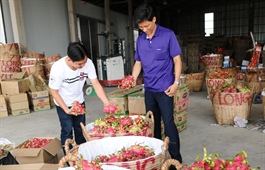Handicrafts needs a stronger export strategy to reach $5b export value by 2025
Handicrafts needs a stronger export strategy to reach $5b export value by 2025
Handicrafts are identified as one of the product groups with great export potential and high-profit margin that Viet Nam needs to boost in the future.

According to the Vietnam Handicraft Exporters Association (VHEA), demand for handicrafts in the world is huge with a market value of up to $100 billion but Viet Nam has yet to tap into this opportunity to develop this industry and boost exports.
Data from the Ministry of Industry and Trade revealed export turnover of Viet Nam’s handicraft products grew by an average of around 10 per cent per year in the past five years, from US$1.62 billion in 2015 to $2.23 billion last year.
Viet Nam’s handicraft products include five groups such as bags, purses, suitcases, hats and umbrellas; toys, sports equipment and parts; ceramics; rattan, bamboo, sedge products; and art wood products. In addition, many fashion items and gifts have been on-spot exporting through sales to foreign visitors in Viet Nam which currently account for about 15 per cent of their spending ($15/person).
Many products are highly valued by foreign markets including ceramic, rattan and bamboo products, handmade embroidery and textile products. These are also items with the highest export turnover of several hundred million of US dollar each year.
The handicraft industry has a higher profit margin of between five and 10 times compared to several industries such as mining, creating thousands of jobs and helping restructure rural labour from low-income agricultural jobs to higher-income workers.
Despite the COVID-19 pandemic, Viet Nam’s export of handmade products maintained positive growth. Shipments of rattan, bamboo, sedge products rose 25 per cent year-on-year to reach $542 million in the last 11 months. Export of ceramics also increased by 7 per cent to $517 million.
The US is still the largest consumption market for Vietnamese handicraft products with sales accounting for 35 per cent of annual export turnover. Japan, the European Union, Australia and South Korea are also among the country’s key exporting markets.
Need for a national exporting strategy
Viet Nam’s handicraft export is forecast to grow more than12 per cent per year with turnover reaching $5 billion by 2025.
Greater opportunities are also opening up from the important free trade deals that the country has joined or signed recently such as CPTPP and EU-Viet Nam Free Trade Agreement (EVFTA). In addition, Viet Nam is emerging as a safe destination after the Government has successfully controlled the disease.
However, despite huge potential, the domestic handicraft industry still faces many problems, including fragmented production, a weak link between actors in the value chain, limited technology and poor innovative design idea and new product development.
According to Filip Graovac, deputy chief representative of Asia Fund in Vietnam, Viet Nam has great potential to export handicrafts and agricultural products but the key issue is how Vietnamese handicraft manufacturers present their good products and prove they are responsible manufacturers to foreign customers.
Consumers are increasingly concerned about environmental and social issues, especially issues related to the origin and legality of raw materials used, labour practices, clean and green production and fair trade market.
Graovac said Vietnamese enterprises had not applied well the traceability of their goods.
Le Ba Ngoc, vice chairman of the Vietnam Handicraft Exporters Association, admitted traceability was one challenge to the growth of the industry. He recommended local businesses learn more about the basic business and market requirements, including traceability.
To reach the world further, Ngoc said the handicraft industry needed to build the export strategy for the next five years.
The Ministry of Industry and Trade said in the future, it would focus on improving the value chain of Viet Nam's handicrafts, prioritising the products with high competitive advantages, increasing product value and standards to meet different market segments, especially middle and high-end market segments.


























